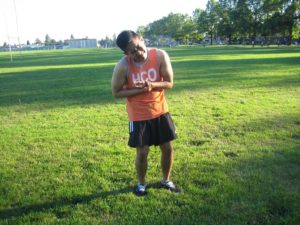De Quervain’s tendinosis is characterized by sore swelling of specific tendons of the thumb. The tendons are tissue bundles that link muscles to bones. Generally, the tendons glide smoothly through a sheath. The sheath keeps the tendons in place next to the thumb bones.
Any swelling of the tendon and/or thickening of the sheaths can cause friction. The tendons no longer slide smoothly through their sheaths. Once this occurs, certain movements of the thumb and wrist become difficult.

Indications
- Pain and tenderness throughout the thumb side of the wrist or directly over 2 specific thumb tendons
- Pain that is aggravated if the thumb or hand is used
- Pain or discomfort arises abruptly or over time.
- The pain might radiate into the thumb or from the wrist to the lower arm.
- Painful and difficult movement of the thumb especially grasping or pinching objects
- Popping or snapping sensation when the limb is moved
- Some experience swelling and pain on the side of the wrist at the base of the thumb.
What are the causes?
- Overuse
- Repetitive holding
- Direct blow to the thumb
- Certain inflammatory conditions such as rheumatoid arthritis
Racquet sports, gardening and various workplace tasks can worsen the condition. In some cases, the precise cause is unknown.
Management of De Quervain’s tendinosis
- Splints are used to allow the wrist and thumb to rest and prevent it from moving. These are usually worn 24 hours a day for 4-6 weeks.
- Application of ice on the wrist and thumb region to alleviate the swelling
- Avoid activities that triggers pain and swelling
- Medications might be given by the doctor. In case the symptoms persist, anti-inflammatory medications such as ibuprofen or naproxen might be given to lower the swelling and pain. Steroid injections directly into the tendon sheath might also be considered.
Surgical approach
In case the non-surgical approach could not effectively alleviate the pain and swelling, surgery might be suggested.
The surgery for De Quervain’s tendinosis is an outpatient technique carried out under local anesthesia. Throughout the procedure, a small-sized incision is created in the sheath in which the tendon passes. Slicing the sheath provides more space for the tendons to slide smoothly via the sheath. The objective of surgery is to reduce the pain and swelling as well as restore the range of motion to the thumb and wrist.
